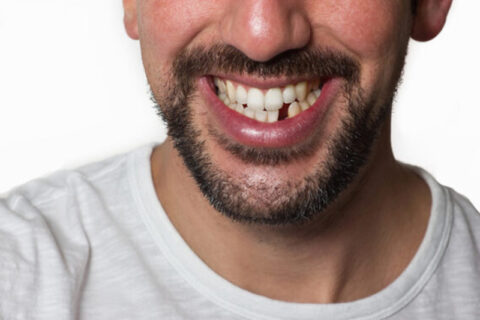How to Properly Care For and Brush Your Teeth

Ever since we were children we’ve heard, like a broken record, “Brush your teeth! Don’t forget to floss! Don’t eat so much sugar, you’ll get cavities!” But what really is the big deal, anyway? In today’s world can’t you simply replace rotten teeth with shiny new implants that will look and feel as good or better than my original teeth, doc? Well it’s not quite that simple. First and foremost, unless you have some preexisting defect or weakness in your teeth or underlying bone structure, the chompers you started out with are always going to be better than even the best replacements. Second, taking care of your own teeth is by far the most cost effective option over the life of the product. After all, a little toothpaste, some floss, a toothbrush and a few dental visits is far less expensive than thousands of dollars shelled out for implants, veneers, or other cosmetic dentistry procedures to try and rectify the effects of years of poor oral hygiene.
Wherever you are on your oral health journey, start with a checkup. Bite the bullet and schedule an appointment with your dentist for a routine examination. Get those x-rays and a thorough exam and cleaning so you can determine whether you have any cavities that need filling, tartar that needs removing, or other work that needs to be taken care of. Once you and your dentist have set up a treatment plan and you have scheduled your six-month (yes, you’ll be heading to the dentist twice a year from now on!) follow up appointment, it’s time for an overhaul of that toothbrush technique. On your way home from the dentist, stop and get a new toothbrush. Trust me. You need a new toothbrush. At this point don’t spend a lot of time fretting over whether to get the sonic version with a built in rocket launcher, just get a reasonably priced, manual toothbrush that won’t wash your car for you. Anything is better than the six year old, snaggle-bristled monster you have in your medicine cabinet at home. Pick up some dental floss while you’re at it. That will do for now. We’ll graduate to mouthwash and fancy toothbrushes later. Baby steps, grasshopper, baby steps.
After dinner, put some of your favorite toothpaste – with fluoride, please! – on your new bristles and go to town. According to Colgate and dentists everywhere, proper tooth brushing technique involves tilting your toothbrush at a forty-five degree angle against the base of your teeth. Gently brush the outside, inside and chewing surface of each tooth with short back and forth strokes of your toothbrush, then brush your tongue to get rid of any odor causing bacteria hiding there. Rinse well and then follow with floss once per day. Many people who religiously brush their teeth twice per day, sometimes even more, cringe at the thought of flossing and avoid it at all costs. Do not fall into this trap! Cavities between the teeth are an unpleasant and sometimes painful ailment often easily avoided. Many dentists even refer to these pesky cavities as “flossing cavities,” because they could be avoided if patients simply flossed on a regular basis. With routine checkups and cleanings, a fresh toothbrush, and a regimen of regular brushing and flossing, you are now well on your way to maintaining good oral health and minimizing the discomfort and expense of complicated dental procedures.


